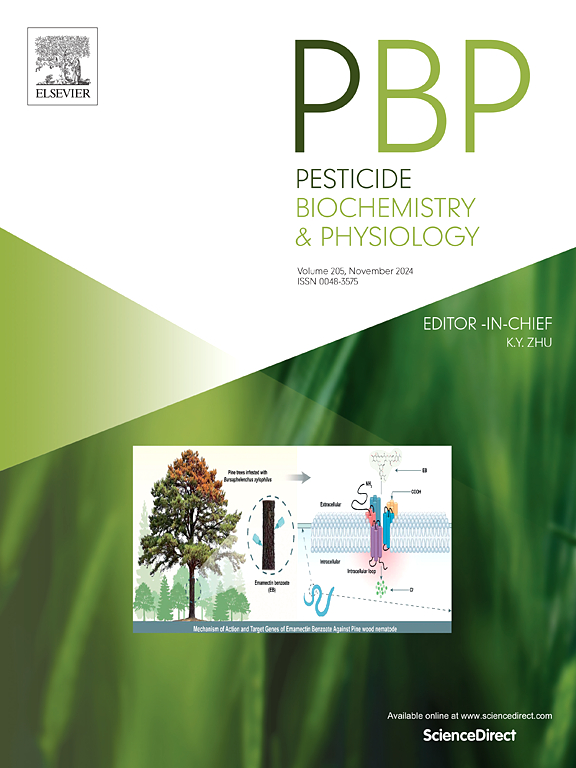The UDP-glycosyltransferase UGT352A3 contributes to the detoxification of thiamethoxam and imidacloprid in resistant whitefly
IF 4.2
1区 农林科学
Q2 BIOCHEMISTRY & MOLECULAR BIOLOGY
引用次数: 0
Abstract
Uridine diphosphate (UDP)-glycosyltransferases are essential phase-II detoxification enzymes that glycosylate lipophilic endogenous and xenobiotic compounds and they are thought to play a role in driving the evolution of insecticide resistance. To examine if the resistance to thiamethoxam and imidacloprid was associated with enhancement of UDP-glycosyltransferase in the whitefly, Bemisia tabaci, we first conducted UDP enzyme activity assays in resistant and sensitive strains in the absence and presence of UGT inhibitors. We found that the UGT enzyme content of resistant whitefly was significantly 5.02- to 10.69-fold higher than that of sensitive whitefly. Individual UGT inhibitors effectively inhibited UGT activity in resistant strains and their effect was synergistic when applied in combination. We then used bioinformatic, molecular, genetic and in silico approaches to determine if UGT352A3 encoded a key enzyme linked to neonicotinoid resistance. In resistant strains, UGT352A3 expression was elevated 1.8- to 6.6-fold compared to susceptible strains, which correlated with higher resistance ratios. RNAi-mediated knockdown of UGT352A3 in resistant whitefly strains significantly heightened their sensitivity to the insecticides, thiamethoxam and imidacloprid. Molecular docking analyses further confirmed a strong binding affinity between UGT352A3 and thiamethoxam and imidacloprid, which supported a role in their metabolism. These findings suggest that UGT352A3 is a critical factor in the development of resistance to thiamethoxam and imidacloprid in whitefly, underscoring its important potential as a new pest resistance management target.

求助全文
约1分钟内获得全文
求助全文
来源期刊
CiteScore
7.00
自引率
8.50%
发文量
238
审稿时长
4.2 months
期刊介绍:
Pesticide Biochemistry and Physiology publishes original scientific articles pertaining to the mode of action of plant protection agents such as insecticides, fungicides, herbicides, and similar compounds, including nonlethal pest control agents, biosynthesis of pheromones, hormones, and plant resistance agents. Manuscripts may include a biochemical, physiological, or molecular study for an understanding of comparative toxicology or selective toxicity of both target and nontarget organisms. Particular interest will be given to studies on the molecular biology of pest control, toxicology, and pesticide resistance.
Research Areas Emphasized Include the Biochemistry and Physiology of:
• Comparative toxicity
• Mode of action
• Pathophysiology
• Plant growth regulators
• Resistance
• Other effects of pesticides on both parasites and hosts.

 求助内容:
求助内容: 应助结果提醒方式:
应助结果提醒方式:


